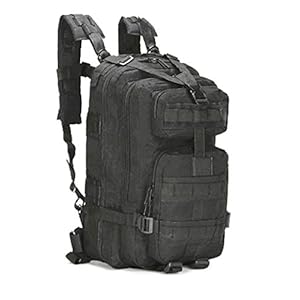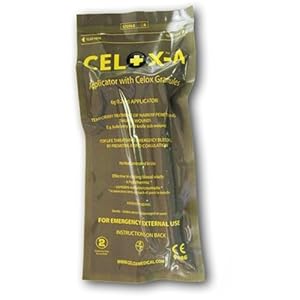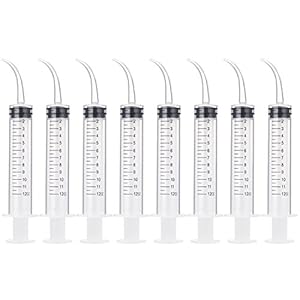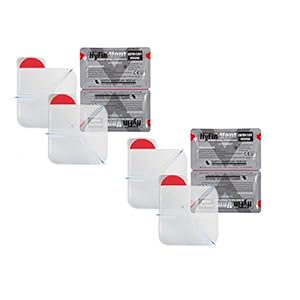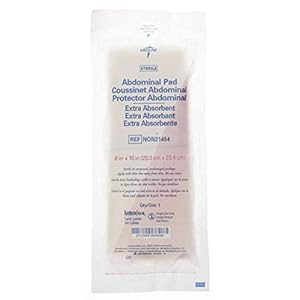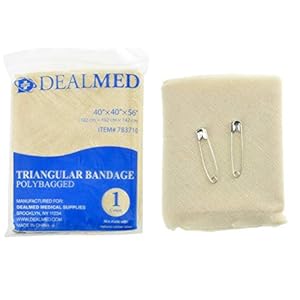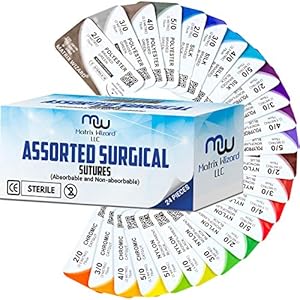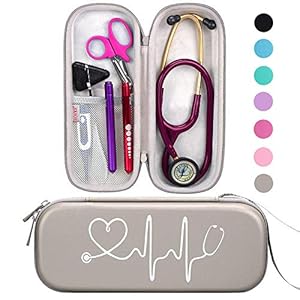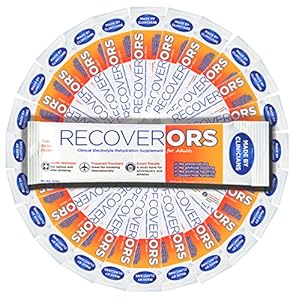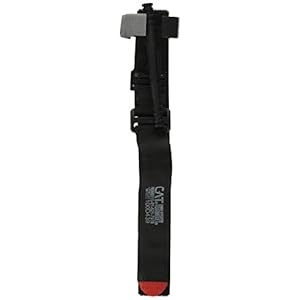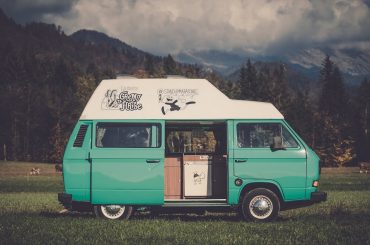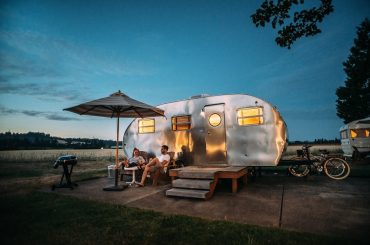There is certain emergency gear every RV owner should have in their RV, whether it is a motor home, travel trailer, popup camper or a camper van. Yet the needs of full time living RV owners can require even more first aid supplies to be kept stored within the RV as during your travels you may be far away from hospitals and will need to take care of yourself. You should also be prepared for any accidents that may happen while driving. Living as a full time RV owner often means you will be traveling more often and further distances than most RV owners usually do which increases the chance of you experiencing road accidents.
I myself am a full time RVer, and I am also ex-military. While I am not a doctor nor was I a medic during my Army days, I was a certified Combat Lifesaver which means I have training in treating traumatic injuries such as heat exhaustion, burns, gun shots and stabbings. I also know how to do IV insertions and some minor surgery. This guide you are reading is my list of first aid medical supplies which I keep in my travel trailer as a full time RVer.
Although I am a solo digital nomad / vagabond traveler I still keep a lot of items in my trailer that are not expressly for myself but intended to be able to provide treatment to others I encounter in my travels, as well as those who temporarily join me on my adventures as a travel companion. I believe that being prepared for disasters and emergencies of all kinds of necessary to have the peace of mind that enables me to live like a vagabond. I recommend other like-minded adventurers who have adopted the full time RV living way to consider making a similar kit to what I have. You never know what kind of injury you may need to deal with during your journeys.
Is it cheaper to make your own first aid kit?
There are many first aid kits for campers and RVers available for purchase at stores and online, but I have never seen one that is actually very good. They tend to be very over-priced; you’re usually at most getting a quality bag. Mostly what these pre-made first aid kits have is a bunch of band aids. Band aids are largely useless for any real first aid. You can get the same quantity of band aids much cheaper by purchasing a box of them yourself at a grocery store.
Pre-made first aid kits will also often have junky items such as poorly constructed tourniquets, and useless things like “snake bite venom extractors”. Despite popular myths there is absolutely no way to suck venom out of your bloodstream once a venomous snake has bitten you. In my honest opinion the FDA should ban these kinds of “devices” from being sold because it is just ripping campers off and encouraging people to do dumb things to treat snake bites that waste time that could be spent on getting real treatment at a hospital.
It seems to be anything with the express words ‘RV’ or ‘Camping’ that is produced commercially tends to have a higher price than if you just purchased these items directly, so I don’t suggest purchasing any kinds of first aid kits expressly made “for camping” because you’re just paying way more than you should for what they have and they will not have what you need for an emergency anyway.
My advice is that you should not purchase pre-created first aid kits. You will at best get a nice bag that is full of a bunch of junk you will need to replace with the stuff I have in my list on this page. The kit I encourage you to make will be useful in an emergency. The kit you bought off the shelf at Walmart will not be.
What first aid items should you have in your RV?
You might be wondering, “What would go in a RV first aid kit?”. Well, this is what my list looks like.
Traumatic Wounds First Aid Kit Check List
- Good first aid bags to hold the kit items
- Travel size Advil & Extra strength Tylenol pill packages
- Assorted band aid sizes
- Trauma Wound Dressings / Hemorrhage Control Bandages
- Stops Bleeding Hemostat powder package
- Celtx-A applicator
- Roll of stretch gauze & Sports Tape Wrap
- One small dish towel
- Safety clips in assorted sizes
- Oxycodone pills
- Surgical sponges
- Wound wash applicator syringe (no needle)
- HyfinVen Entry / Exit Wound Chest Seal
- Extra Absorbent adnominal pads / Combine Pad
- Sting Relief Wipes
- Antiseptic Towelettes
- Triangular bandages
- Disposable latex gloves
- Nitrile gloves (latex free)
- Burn dressing relief Gel & Burn Relief Spray
- Can of Wound Wash Zone
- Surgical Eye Shields
- Small magnifying glass
- SteriStrip Wound Closures
- Mixed sizes of sutures
- Saline Nasal Spray
- Hydrocortisone 1% Plus anti itching cream
- AllerClear
- Sleep aid pills
- Travel sickness pills
- small bottle of Anbesol oral anesthetic
- Sterile alcohol prep pads
- Povidone-iodine prep pads
- iodine swabs
- First Aid Antibiotic Cream (Bacitracin zinc neomycin sulfate polymyxin b sulfrate)
- Flexible Splint
- CPR Shield Mask
- Otoscope
- Stethoscope
- Single use nasal airway tube
- Electric thermometer
- Bengay Topical Analgesic Cream
- Nasal relief spray
- Opcon A eye relief dropper
- First Aid Antibiotic Ointment
- Repel 100 Insect Repellant Spray Stick
- Rhino Strong AirLift Tool Pump Wedge
- Bottle of Electrolyte Solutions
- Nuun Sport Hydration Tablets
- RecoverORS packets
- Poison Ivy & Oak Scrub
- Small Tub of Petroleum Jelly
- Small thing of Banana Boat UltraSport Sun Block
- Plastic Emergency Poncho
- Field Surgical Kit
- Surgical scissors to cut open clothes
- Small disposable lighter (to sterile surgical kit)
- Small booklet: The Complete First Aid Pocket Guide
- Combat Tourniquet
While this may seem like a lot of things you may never use, the reality is that you don’t have these items so that you use them every day. You have these items for that rare moment when you DO need them and if you don’t have them someone could die. Not all of these items are for life threatening injuries but most of them are for treating some kind of injury that could lead to an infection; and infections can lead to death.
This first aid kit bag is expressly designed to have solutions for dealing with all kinds of traumatic wounds and injuries, and other small things that may be encountered that can be easily dealt with using the correct first aid supplies for treatment. Whether it is a sucking chest wound or broken bones (fingers, arm, leg, etc) or someone just needs some oxy to null the pain, this first aid kit I made for full time RV living has it. I know that as long as this bag is within arms reach of me, any kind of accident I ever find myself in that hasn’t killed me instantly I will probably be able to patch myself up from well enough that I can then get to a hospital.
Another thing to point out is that some of my items may seem redundant; for example I have multiple types of pain killers and wound cleaning ointments. The main reason is that some people are allergic to different types of things and cannot take the same kinds of items that serve the same purpose. The other reason is that some items do a similar task to others, but are more expensive to replace. As an example I have cheap, inexpensive antibiotic wipes and more expensive swabs meant for applying before you do any kind of surgery.
Let’s talk about each item and why I have it on the list.
Good Bags to Hold Your First Aid Kit Items
The first thing you need is good first aid bags to put your essential items in. A good bag is something that you can easily lift, that is well stitched and has strong zippers that will not easily break. It should be something you can sling over your shoulder if you need to go hiking, but is also compact enough you can throw it in the back of your truck seat and it won’t take up much room. For this reason I use a military style medic bag produced by OneTigris. I have handled many military style medic backpacks and this is by far my favorite one.
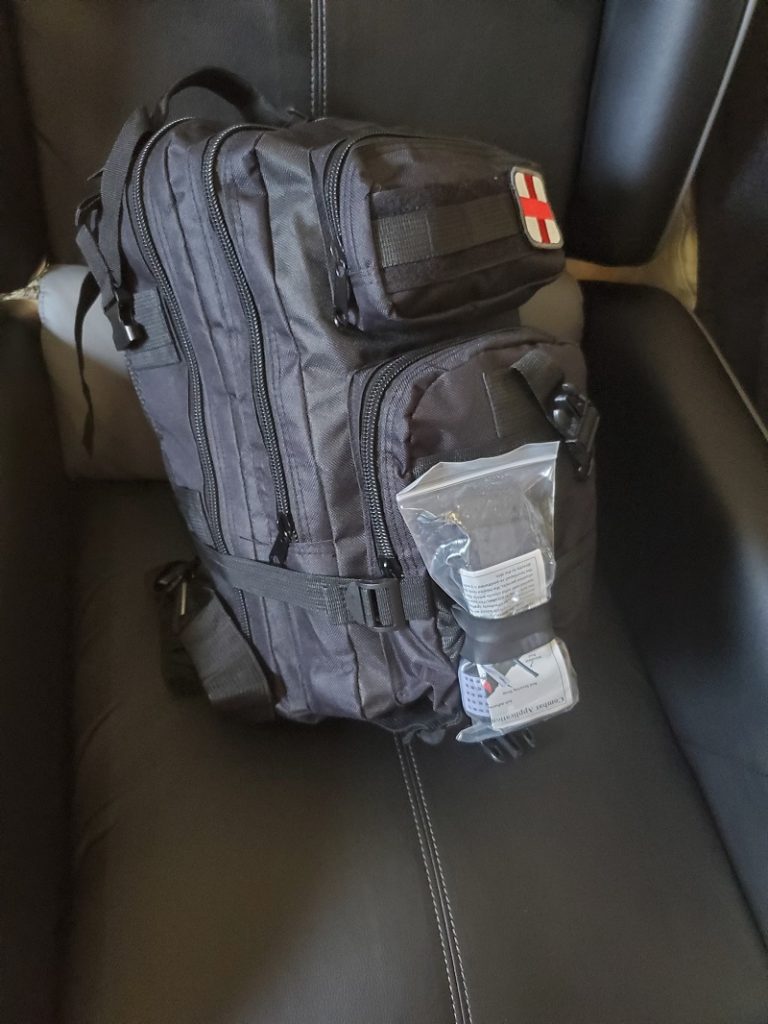
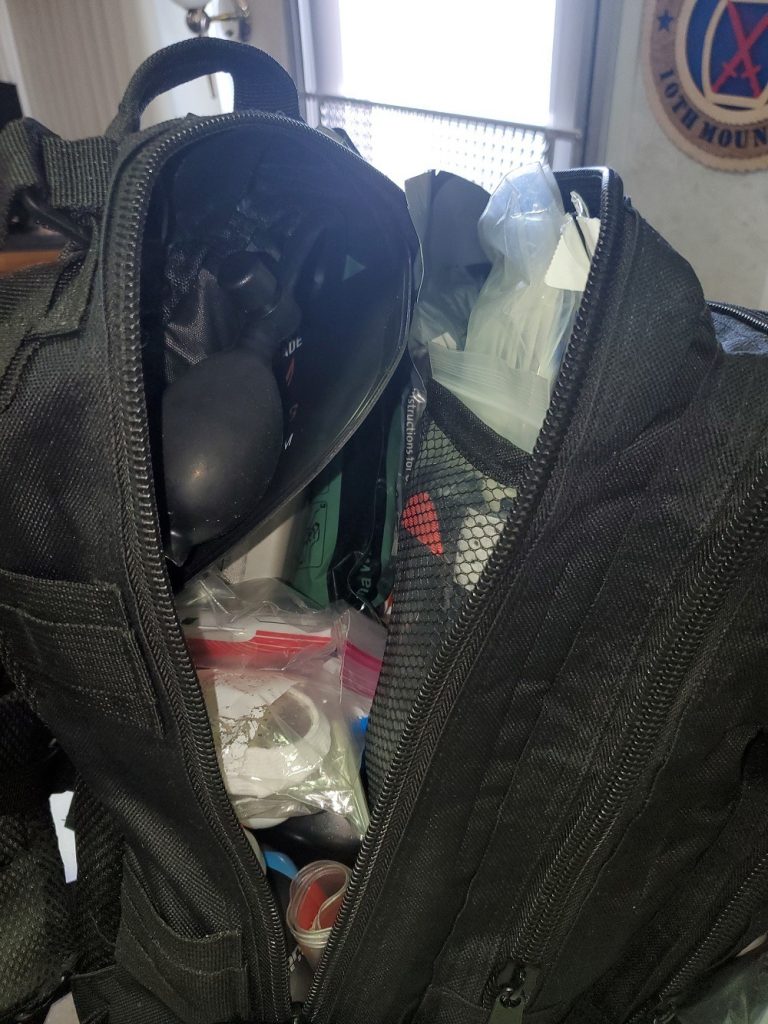
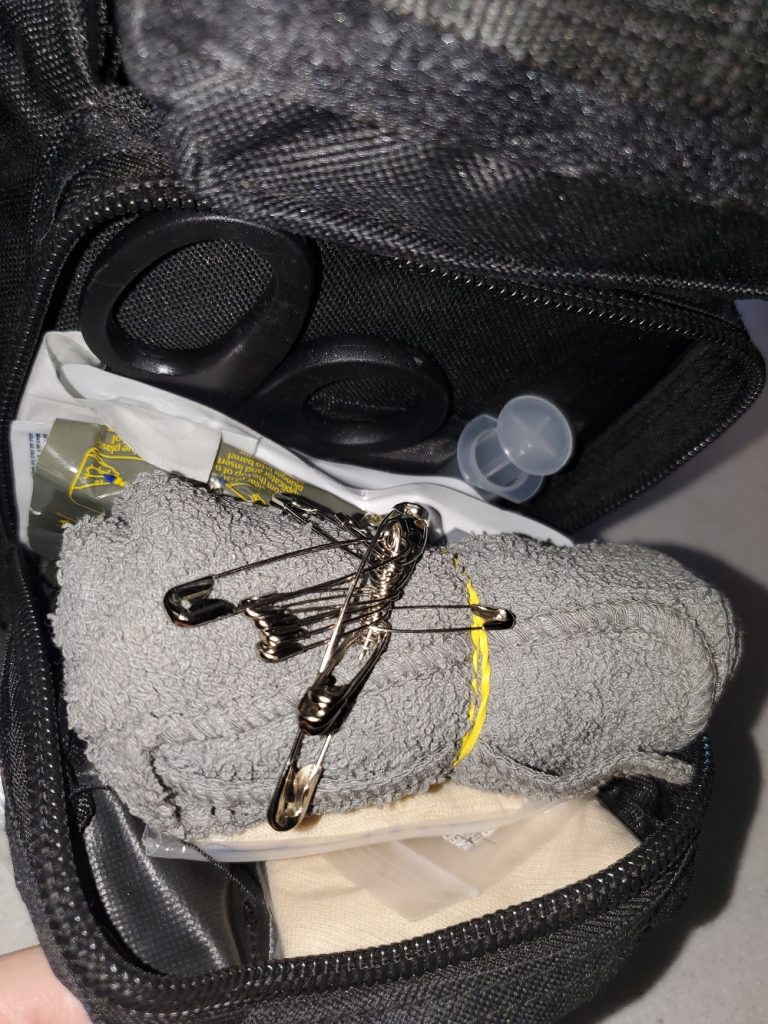
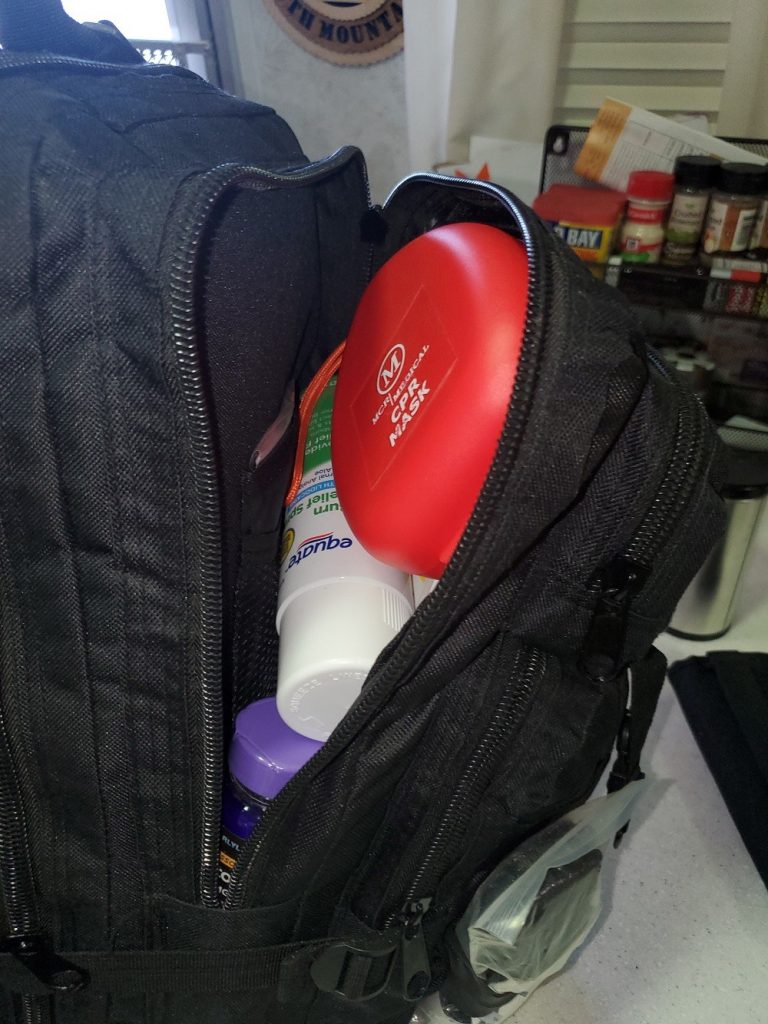
Whenever I hit the road I always take this bag with me, setting it in the passenger side seat so that it is near me in case I ever need it. When I go into my RV I take it back inside with me and leave it in the living room.
The next essential item my RV first aid kit has is a secondary bag of supplementary items. I only keep this kit inside my RV, in the cabinet I use for storing all first aid and medical supplies.
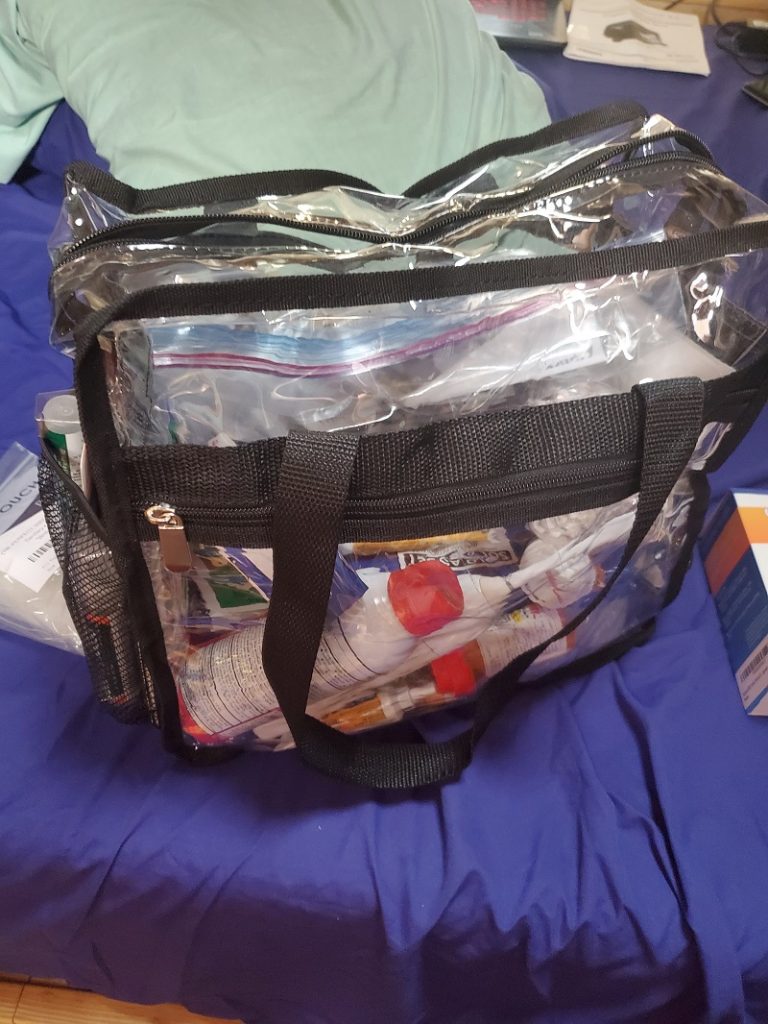
I prefer to keep these first aid kits in clear transparent plastic makeup kit bags. This allows me to quickly see what is inside each bag. As this bag does not travel outside of my RV it doesn’t need to be made of as robust material as the trauma wound first aid kit I keep in the military style backpack.
Travel size Advil & Tylenol packages
You can purchase these cheaper in bottles and then repackage them yourself in Zip lock baggies, but I ended up buying a bunch of these for a trip to Disney World (trying to go through airport security with baggies full of unlabeled pills isn’t the best of ideas….) and I had many packages left over. Advil is aspirin based and good for treating head aches and other minor pains. As some people are allergic to aspirin so I have Tylenol, too.
Assorted band aid sizes
Not every cut needs a band aid but it can often make someone feel better. I rarely use band aids myself as wounds heal faster without them but I keep a small number of these in my bag anyway. If you have children you probably want some of these. Put a little dab of Neosporin on the band aid to keep it from getting infected.
Trauma Wound Dressings / Hemorrhage Control Bandages
If someone has a very large wound, such as a gun shot, knife stabbing or anything like that then you need hemorrhage control dressings to reduce the bleeding. I use Israeli style bandages, as that is what I am most experienced with using since this is what all soldiers are taught to use.
Stops Bleeding Hemostat powder packages and Celtx-A applicators
If a wound is very deep you’re going to need to use blood clotting powder or the wound will not stop bleeding and the person will die. There are multiple types of absorbable hemostat powders and they each have different purposes. This kind is good if the person is going to be able to go to the hospital within the next few hours, because it is the most effective powder you can buy HOWEVER this material needs to be removed or the wound will infect. This is why I also have another type, the Celox-A applicators that is not as effective at stopping bleeding but it also does not need to be removed from the body. The injectors are also better if the wound is very deep, such as a bullet or knife wound. If I need to I can apply this with one hand and save my own life.
Roll of stretch gauze & Sports Tape Wrap
This is a fairly standard item, needed to help keep Israeli bandages on as well as to make things like splints.
Sports Tape Wrap can serve the same purpose but is not absorbent to blood and can be used to brace sprained ankles, too.
One small dish towel
Towels have many useful purposes as you can make everything from an ice pack to a tourniquet from them, and they can also be used with clotting powder to create a homemade version of an Israeli bandage should you need another one. I also attached the assorted sizes of safety pins to my towel to make organization easier.
Oxycodone pills
These are left overs from a surgery I had last year. Oxy is addicting but a powerful pain reliever. If I break my leg in the middle of nowhere or worse, have to amputate a limb and then walk hours to get help then I’m gonna need to null my pain as much as possible to endure that ordeal. Oxycodone is a good aid for that situation.
Surgical sponges
For field surgery.
Wound wash irrigation applicator syringe (no needle)
Deep wounds need to be washed out with an alcohol solution or they will get injected, this item makes that task simple. I do have a can of wound wash but some injuries will require you expressly needing to inject something into the wound cavity to wash it out and the can won’t work for that situation unless you shoot it through one of these syringes. These dental irrigation syringes do not have needles btw.
HyfinVen Entry / Exit Wound Chest Seal
If someone has a sucking chest wound the only way to reseal the chest is with something like this. If you don’t reseal the chest they cannot breath and will quickly die. These things come in pairs so you can do both the entry and exit wounds. Alternatively a small potatoes chip bag can be used to create a temporary seal, but it’s better to just have the proper medical supplies on hand.
Extra Absorbent abdominal pads
These are meant for large injuries to surface areas such as the torso.
Sting Relief Wipes
For insect stings and bites. Nobody should explore nature without these. Scorpion and bee stings burn like hellfire and anything you can do to alleviate that pain is good.
Antiseptic Towelettes
You need various types of antiseptics for different things, but some people are allergic to different ones, too. I have a variety in my kit.
Triangular bandages
If you need to make a sling or keep an eyeshield in place these make that task simple to do.
Disposable latex gloves & Nitrile gloves (latex free)
You don’t want to touch people’s blood with your bare hands or you might get infected with whatever blood born pathogen they have. Some people are allergic to latex so nitrile gloves I also have.
Burn dressing relief gel
If you get a bad burn this gel can help null the pain without having to turn to oxy.
Can of Wound Wash Zone
This makes the task of cleaning a deep wound much easier.
Surgical Eye Shields
If you get an severe eye injury this can help protect the area.
Small magnifying glass
Sometimes you can’t see what is going on with a wound very easily, or you need to try to find things like fleas and ticks in someone’s hair. Or even get splinters out of their hands. A magnifying glass makes this easier.
SteriStrip Wound Closures
These are a good alternative for small cuts that otherwise would need stitches. They are much simpler and easier to apply, since they work almost like a band aid.
Mixed sizes of sutures
If you need to close a large wound and the band aid type stitches won’t work then you have to do things the old fashioned way. I keep a box worth of sutures in my trauma wound bag; I took the sutures out of their box and placed them into a Ziplock bag to better conserve space. I also cut the name of the items off from the box and included it in the bag so I can quickly see what it is during an emergency so I don’t have to think as hard trying to remember what items like this are.
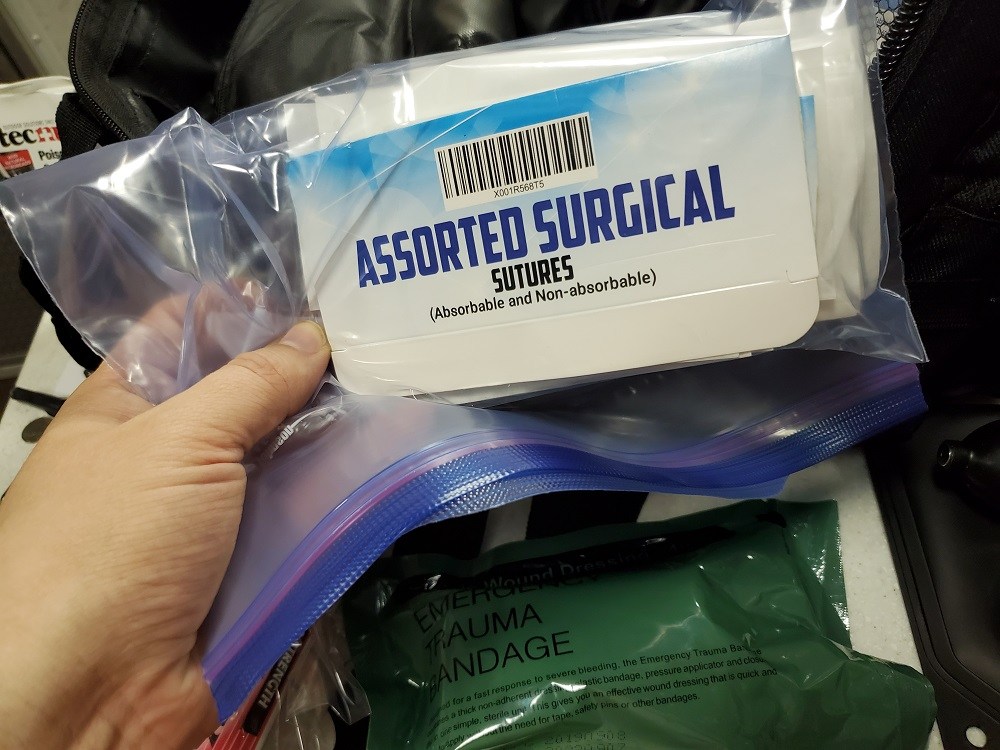
Saline Nasal Spray
This will temporarily thin the mucus in a stuffy nose, relieving some people’s head colds as well as symptoms from severe seasonal allergies.
Hydrocortisone 1% Plus anti itching cream
Helps relieve the feeling of needing to scratch when you have a minor skin irritation.
AllerClear
Helps relieve symptoms from many kinds of allergies.
Sleep aid pills
Melatonin can help make a person feel more sleepy. Useful if a person is having trouble sleeping due to pain they are experiencing, or from stressful thoughts.
Travel sickness pills (Dramamine)
Some people don’t travel well. These help treat motion sickness, and can also be used to treat symptoms of nausea, vomiting and dizziness in general.
Small bottle of Anbesol oral anesthetic
If someone takes a hard hit to the mouth and busts a tooth, bites their tongue, or just has a really bad tooth ache this can dull the pain until you get to a dentist.
Sterile alcohol prep pads
These are generic rubbing alcohol pads for cleaning a wound site.
Povidone-iodine prep pads & Iodine swabs
These are expressly for disinfecting a site before needing to do field surgery but can also be used on people allergic to rubbing alcohol pads.
First Aid Triple Antibiotic Ointment Cream / Neosporin (Bacitracin zinc neomycin sulfate polymyxin b sulfrate)
Often sold under the trade name of Neosporin, Bacitracin zinc neomycin sulfate polymyxin b sulfrate ointment is generically sold as triple antibiotic cream. This is good to put on minor cuts to keep them from getting infected.
Flexible Splint
This makes it easy to create a splint as you just unroll the material and you don’t need to go searching for sticks or anything, that may not be available where you are at.
CPR Shield Mask
If you need to do CRP to someone you should use one of these masks if you can, because you don’t want blood or other bodily fluids to pass to you if that person has any kind of STD, blood born pathogen or anything else that can be transmitted via bodily fluids.
Otoscope & Stethoscope
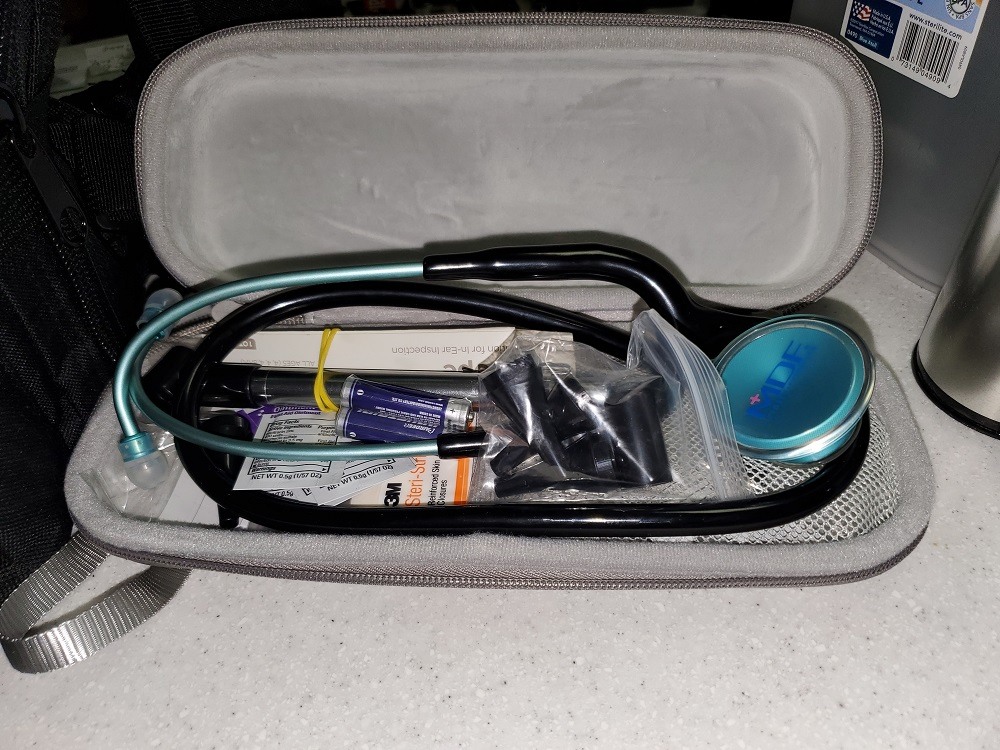
I have an otoscope & stethoscope, which I keep in the same case along with sterile swipes.
Why do I have an otoscope & stethoscope? There are a variety of things which can happen to a person that can only be identified if you use the proper device so I try to have the proper instruments. Stethoscope is useful for hearing any issues someone has with their lungs, such as being filled with mucus or blood and an otoscope is useful for any kind of pain someone is having with their ears. If you do camping in the woods, it’s possible that tiny insects can crawl into the ears when someone is sleeping. This is a rare event though but they aren’t called earwigs for nothing.
Can earwigs actually get into the human ear?
Yes. As a note currently if you search Google the top results will claim that ear wigs crawling into ears is a “myth”; in truth earwigs can indeed crawl into the ear canal, as can any small insect. YouTube is full of medical videos showing removal of all kinds of things from human ears, including myiasis of the ear which is where flies lay eggs in the ear canal and they grow into maggots. The only reason these events have become “rare” in more civilized countries is because many people live in cities and most of the insects that crawl into ears and lay eggs focus on doing this to farm animals. Humans that have little contact with farm animals like goats, pigs, cattle and such will rarely encounter these types of insects. In more rural countries where people still cohabitate with farm animals during the winter these things are more common.
So the reason I have an otoscope is because I don’t know what I will encounter while camping in rural areas and I like to be prepared.
Single use nasal airway tube
This is also called a nasal trumpet, it is a slender plastic tube designed to be inserted through the nose to clear a passage way for breathing if the throat has an obstruction, such as become inflamed or is blocked due to the person having choked on something. This is necessary when doing CPR on certain people, as even if you do CPR on a person with blocked air they cannot breath. You will want to lube it with the petroleum jelly first before insertion.
Electric thermometer
For getting someone’s temperature to see if they have a fever.
Bengay Topical Analgesic Cream
This relieves sprained muscle pains.
Nasal relief spray (Oxymetazoline )
A topic decongestant for relieving congested sinuses. This one is more expensive than the saline only version.
Opcon A eye relief dropper
For relief of eye pains.
Repel 100 Insect Repellant Spray Stick
This is for repelling insects. I like it because it’s a small spray stick and takes up little space in the bag.
Rhino Strong AirLift Tool Pump Wedge
This is designed for being able to wedge open doors and windows. It can be used to get into a locked car without having to break the window, and it can be used to create a wedge in other situations such as a person being pinned by something, which could be enough space to get them free from underneath it. I mainly keep this in case of a car accident.
Bottle of Electrolyte Solution (Pedialyte)
This is a fairly large item I keep in my bag but it’s an important one. This is a highly concentrated solution of electrolytes meant for babies, but can be used for anyone experiencing a heat stroke. Many people would have an IV which is going to be more effective if the person has passed out already but IV packages are more expensive than one of these bottles. If someone suffering heat stroke drinks this down they will probably recover in a few minutes.
Of course the main reason people buy these is for babies and toddlers who are suffering anything that makes them vomit so they can replace fluids and it is good for this reason, too.
Nuun Sport Hydration Tablets & RecoverORS packets
These have a similar purpose as Pedialyte but I keep that bottle for an emergency situation where there isn’t much time to mix one of these up. Sport hydration tablets are better to use if you’re going to be actively working out whereas I use the cheaper RecoverORS packets for people who have a bad hangover. I’ve had to use a packet for myself a few times for that purpose and they are much cheaper than Pedialyte.
Poison Ivy & Oak Scrub
Just what it says on the tin. If you go hiking in the brush you’ll want some of this in case anyone touches the wrong vine leaves.
Small Tub of Petroleum Jelly
Petroleum jelly has many medical usages, and is good for applying to sores on the feet as well as other areas that may have injuries from friction, such as between the thighs on a long hike.
Small thing of Banana Boat UltraSport Sun Block
I mean its sun block. What do you expect?
Plastic Emergency Poncho
You never know when you might need to use this. In addition to being a poncho to help keep rain off an injured person, it can also be used to cover your bag during the rain to protect it, and the plastic can also be laid down on the ground to create an area to do field surgery, as it will at least be a more sterile surface than doing surgery directly on the dirt.
Field Surgical Kit
If I am in a very rural area that is many hours from the nearest hospital I might have to do surgery on myself or others. Therefore I have a small field surgical kit for doing so. The one I have has its own molle strap so I keep this strapped outside the bag to leave space inside the compartments for other loose items.
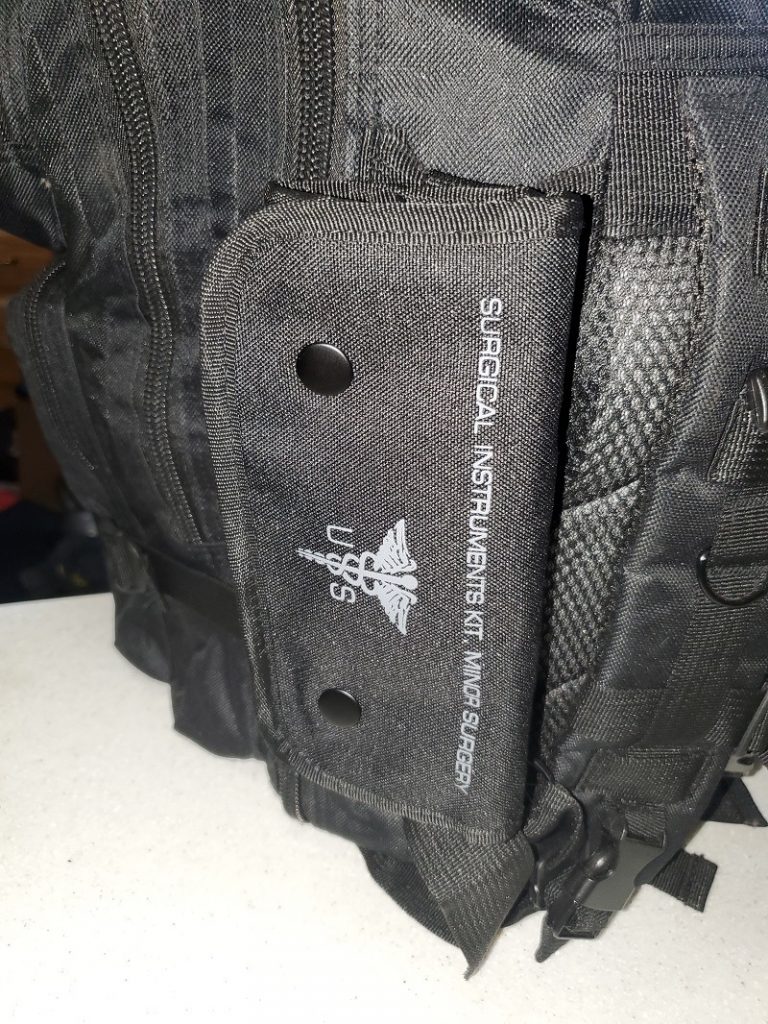
Surgical scissors to cut open clothes
Trying to get someone’s bloody shirt or paints off so that you an get to a wound to clean it and patch it up takes too much time compared to just cutting the clothing off. This is especially true if you cannot move the injured person until you’ve begun treating some of their injuries, which is a common occurrence. Scissors can also be used to cut gauze and whatnot.
Small disposable lighter (to sterile surgical kit)
This is for doing a field sterilization of the surgical instruments before using them on a person as well as any other type of situation where it would be a good idea to use a burn instead of a sterile swab. Cauterization is sometimes necessary and you can do most of what you’ll need to do using a small disposable lighter, as even if the lighter itself cannot be used to do the cauterization you can use it to quickly start a fire to heat something else that can.
Small booklet: The Complete First Aid Pocket Guide
I like to keep this booklet of First Aid instructions in my bag in case something happens to me personally, someone else can use my bag to treat myself or others. A kit of useful first aid supplies is useless if no one knows how to use them. While that may be optimistic I think it’s better to include some instructions on how to treat injuries, especially as many people may panic so much they forget their training so it’s good to have someone else read the steps you must take for you to then execute.
The Combat Application Tourniquet
I keep this item strapped to the outside of the bag so I can quickly get to it. This is a pre constructed tourniquet that can be applied with only one hand. It is typically used by soldiers as part of a personal injury kit, and I have it for the same reason. If I get into an accident and need to stop a broken arm or leg from bleeding I can do so quickly using this tourniquet. It can also be used to treat other people, too.
Thoughts on Making a Trauma Wound First Aid Kit for Full Time RV Living
These are the kinds of items that I keep in this bag. I keep other medical supplies in the transparent makeup kit bags which I store in my RV, including extra amounts of each of the items in the trauma wound kit so that if I need more, I have more. Many of these items need to be purchased in bulk anyway.
One trick I use to save space is to take all of the items out of their boxes, put them into a Ziplock bag and then cut off part of the card-box box that says important instructions or information about the item, so that I or others can easily see what these things are and how to use them during an emergency.
Another space saving tip is that I keep my otoscope in my stethoscope’s case to maximize space inside the bag. I also shove additional antibiotic swipes and steristrips in there, too.
You can use my list of items as a base for creating your own first aid kit for full time RV living.


